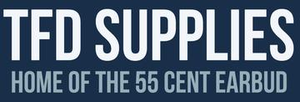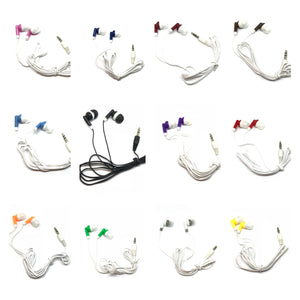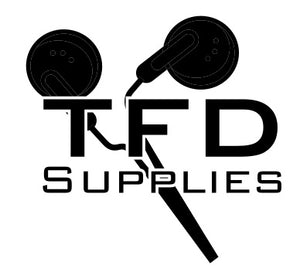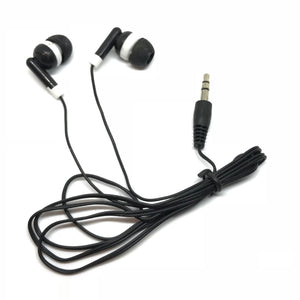Listen
As more and more schools are extending breaks and/or turning to online instruction in light of the COVID-19 pandemic, more and more teachers and administrators find themselves going a little stir crazy.
It’s been impressive and truly beautiful to see various educational resources, publishers, instructional platforms, internet providers, school districts, and organizations come together to help make this all possible.
While there are many people posting on social media asking for help about how to appropriately assign tasks to teachers, para educators, and support staff while schools are not in session, there have been just as many posts calling on us all to take this time to relax and focus on staying healthy.
Once you have read those novels that have been collecting dust on your nightstand, binged your share of shows, and thumbed through your fill of magazines, we want to suggest the following books to inspire you and help once we get back to our campuses.
In our previous post we suggested and reviewed great books about education innovation, student diversity, human learning, and social-emotional learning. Here we look at books for teaching reading and inspiring administrators.
Reading
Readicide: How Schools Are Killing Reading and What You Can Do About It
By Kelly Gallagher
Odds are that if you are a secondary ELAR teacher, you have at least heard of this book. It’s been around for a decade and has truly been changing the way teachers teach and use novels in their classrooms. Not only does Kelly Gallagher challenge the traditional whole-group approach to teaching canonical classic novels which often leaves graduates stating that they hate reading, but he provides ideas and reproducible tools teachers can use in assessing students when allowing choice while promoting high-interest, contemporary literature.
Disruptive Thinking: Why How We Read Matters
By Kylene Beers and Robert E. Probst
If you have trouble with your students being reluctant and uninterested in reading, Beers and Probst (who have proven themselves as experts in the field) push readers to reconsider how they have their students approach texts along with choosing selections that are engaging and relevant to them. The goal of their strategies is to deepen students’ comprehension and develop lifelong readers. While this book can definitely be read independently, it is structured to easily facilitate group discussions in a book study.
A Novel Approach: Whole-Class Novels, Student-Centered Teaching, and Choice
By Kate Roberts
Kate Roberts explores the reading workshop model with practical applications and realistic examples of how allowing students choice in what they read can revolutionize the English classroom. The fundamental conclusion she comes to is that text selection and instruction must be student-centered. Build units around the specific skills the individuals in the group need the most and guide students to select books that can help them build those skills. One of the great things about this book is that Roberts includes video clips of her using these strategies.
180 Days: Two Teachers and the Quest to Engage and Empower Adolescents
By Kelly Gallagher and Penny Kittle
Can you imagine having Kelly Gallagher and Penny Kittle coach you in your English classroom by modeling their techniques? These two ELAR gurus and master teachers invite readers into their classrooms as they attempt to answer the question we have all asked over and over again when looking at the layers of standards English teachers are expected to cover: “How do you fit it all in?” They are transparent about lesson plans, time management, and in-the-moment decision making and adaptations while teaching. Their guiding question while working with students is: Who will these students be as readers and writers after a year under our care?
Patterns of Power: Inviting Young Writers into the Conventions of Language
By Jeff Anderson and Whitney La Rocca
This book provides a practical, engaging approach to teaching grammar, conventions, and style. Forget about worksheets! Imagine using high interest mentor texts to lead students in exploring and identifying what makes good writing… well, good writing. Then guiding students to mimic what they have learned in their own writing. All of this in short, 10-minute mini lessons that include both reading workshop and writing workshop. The great thing about this book is that it includes 70 lessons that are ready to be used. The publisher’s website even includes videos of the authors using this method in the classroom.
Write Beside Them: Risk, Voice and Clarity in High School Writing
By Penny Kittle
Penny Kittle brings 20 years of experience teaching writing to adolescents into the pages of this book. “This is the book I wanted when I was first given ninth graders and a list of novels to teach. This is a book of vision and hope and joy, but it is also a book of genre units and minilessons and actual conferences with students.” Topics covered in this book include: daily writing practice, instructional frameworks, genre work, skills work, and assessment. This practical guide includes anecdotes from her classroom, a study guide, reproducibles, writing samples, and links to videos of Kittle modeling these techniques.
The Writing Thief: Using Mentor Texts to Teach the Craft of Writing
By Ruth Culham
The idea behind this book is that good writers borrow but great writers steal. English teachers seem to see the term “mentor texts” everywhere they look these days, but the problem seems to be finding the time to locate good ones. In this easy-to-read book, Ruth Culham models using mentor texts by providing 90 examples from different genres complete with the actual text and activities to go with them. These models can be a springboard to finding your own!
By Gretchen Bernabei and Jennifer Koppe
If your students groan when you tell them it is time to write an essay, and you secretly dread the hours ahead, knowing you will have to drag every last word out of them, then the kernel essay approach that Gretchen Bernabei has become famous for may just be the reboot you need. After a pretty straight forward explanation of her process of using mentor texts, the bulk of the book is 50 lessons (4 pages each) that are ready to use in your classroom along with examples actual students wrote. This method brings historical documents to life while providing guidance and inspiration for students to write. These nonfiction pieces can easily be paired with pieces from a variety of literary genres.
Administration
By Nathan Maynard and Brad Weinstein
You may have noticed that the same students are getting in trouble for the same things and getting the same consequences over and over again. Nothing seems to change. The goal of discipline should be to teach students how to make better choices, not punishing wrongdoing. The idea behind restorative discipline is finding the root behind the cause of the bad behavior and working with students to meet their needs. Then we can see their behaviors change as they begin to transform into stronger citizens as members of the school community. This is a guide to how to change the discipline structure and culture of your school.
What Great Principals Do Differently: Eighteen Things That Matter Most
By Todd Whitaker
The author has been a middle school, junior high, and high school principal and provides very practical, easy to digest tips that are helpful for both novice and experienced school administrators. The short chapters make this a book that is easy to read in intervals. The balance of advice and real examples make it practical and inspiring. Whitaker challenges principals to be instructional leaders, to value every member of the staff, to lead with heart, and to make difficult decisions for the betterment of the school.
One of our writers says that this is the most helpful, practical book he read in his preparation to become a high school assistant principal. His favorite passage that exemplifies the message of this book is found on page 15:
“Rather than waiting for others to come to them, (outstanding principals) regularly visit classrooms, spend time in the hallways, and seek out informal feedback. As a result, they learn about issues before they become problems. Furthermore, they take advantage of these opportunities to gather and nurture positive ideas from people throughout the school. Don’t wait for someone to come to you. Instead, get out and get involved. Just think of yourself as the ice cream truck of your school!”
Relentless: Changing Lives by Disrupting the Educational Norm
By Hamish Brewer
This book was definitely the hot book this past year. Administrators couldn’t go on Twitter without seeing someone referencing it. Tattooed, wearing a cap and riding down his school’s hallway on a skateboard, this principal brought his experiences growing up in a poor, dysfunctional family into his nontraditional approach to leading his school. He challenges his teachers (and readers) to empower students by disrupting the norm. This book is a true inspiration! If you want to get a taste before diving into the book, just look up Hamish Brewer on YouTube - I bet you’ll have the book in your Amazon cart before the video is over.








boots chemist viagra retail price[/url]